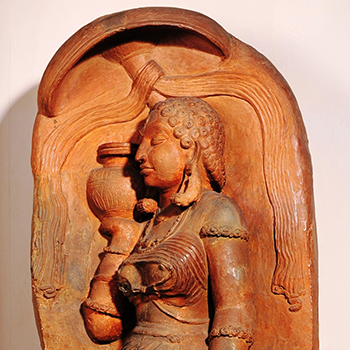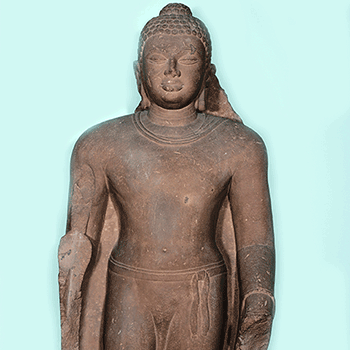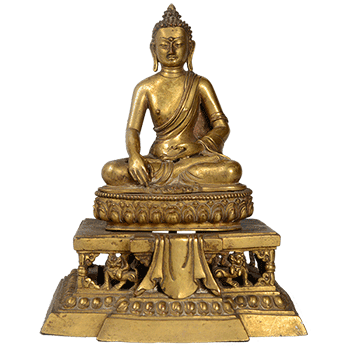This remarkable stone sculpture depicting Lakshman disfiguring Sroopnakha belongs to the Gupta Period and dates back to the 5th century. It finds its origin in Deogarh, Uttar Pradesh. It is 82 cm in height and 56.5 cm in width. This artefact is currently on display in the Gupta Gallery inside the National Museum, New Delhi.

























